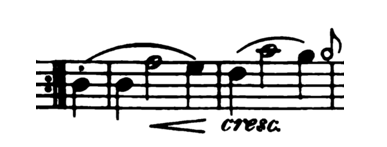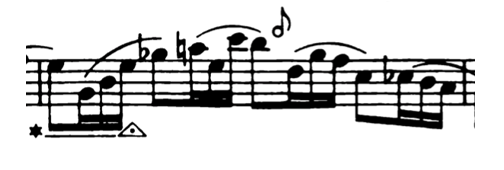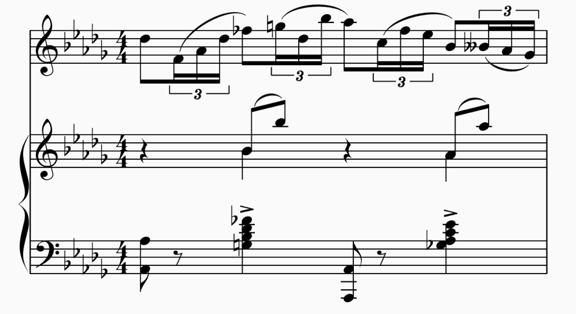A clarinet teacher was recently in touch with a rather interesting query over a marking and a flat in my edition of the Carl Baermann Variations Sentimentales (No. 74 in More Graded Studies for Clarinet Book 2 published by Faber Music) and presently set on ABRSM’s Grade 8 syllabus.
This particular study comes from Baermann’s Clarinet School Op 63, first published in 1864 taking the clarinet player from what was considered a beginner in those days (the very first exercise uses virtually the entire range of the instrument!) via a systematic journey through all the keys (with related scales, exercises, and studies).
I was fairly certain that I hadn’t made any errors in my Faber edition but nevertheless decided to undertake some detective work. The first query concerned a staccato marking under a slur (found in the first upbeat of bars 4, 8 and 12).
In both my edition and the 1918 edition of the Baermann Complete Method published by Carl Fischer, the note appears as follows:
Baermann Complete Method, 1918
In performances this suggests a slight separation of the two B-flats.
I decided to investigate the original 1864 edition published by Offenbach am Main. Baermann, in fact, places a dot over both the B-flats:
Clarinett – (Schule, 1864)
So, the question is, was it a deliberate edit by Gustav Langenus in 1918 to miss out the second dot or an error in the typesetting?
I have followed Langenus in my edition because, in my opinion, as presumably in Lengenus’, a separation between the first and second beat (of the full bar after the upbeat) is not appropriate for either the phrasing or character of this music. Also, the following variations don’t indicate a separation of the first and second beats, and to separate these beats would interrupt the flow of the music. The other query concerns a G-flat in bars 44 and 59 in the second variation.
Baermann Complete Method, 1918 - Variation 2, bar 44
Neither Langenus in his 1918 edition, nor Baermann in 1864 indicate that this G-flat should be naturalised in its second appearance in both those bars. The original edition was published with a piano accompaniment but sadly these are rarely used today, with the whole set of studies usually played unaccompanied. In investigating the harmony in the piano accompaniment, the G-flat is clearly intended throughout the bar; there is no inference for a change back to G-natural.
Bar 44 with piano accompaniment (showing clarinet part in concert pitch)
In fact, the G-flat, when it returns in the third beat is an entirely acceptable passing note, however as an unaccompanied piece, you may prefer the sound of a G-natural on its second appearance. Thus, maintaining the G-flat or altering it to a G-natural both work in performance. It’s entirely up to you!
Assuming that most music is correct when you see it in print (from first editions onwards) it’s probably best to follow the printed score. There are of course exceptions to this ‘rule.’ Performance markings (marks of attack, articulation and dynamics) were fairly sparsely used until the late Classical and early Romantic periods. Weber was well known for leaving many of these choices to his performers. For example much of what you might see in today’s editions are often editorial. So, using good taste and making informed choices is quite acceptable, particularly when it comes to the interpretation of those markings in music of this period. Making changes to pitch is more questionable, though it’s impossible to know whether, just occasionally, a composer might have made a mistake, forgotten to correct an accidental… or maybe simply ran out of ink at the crucial moment…








